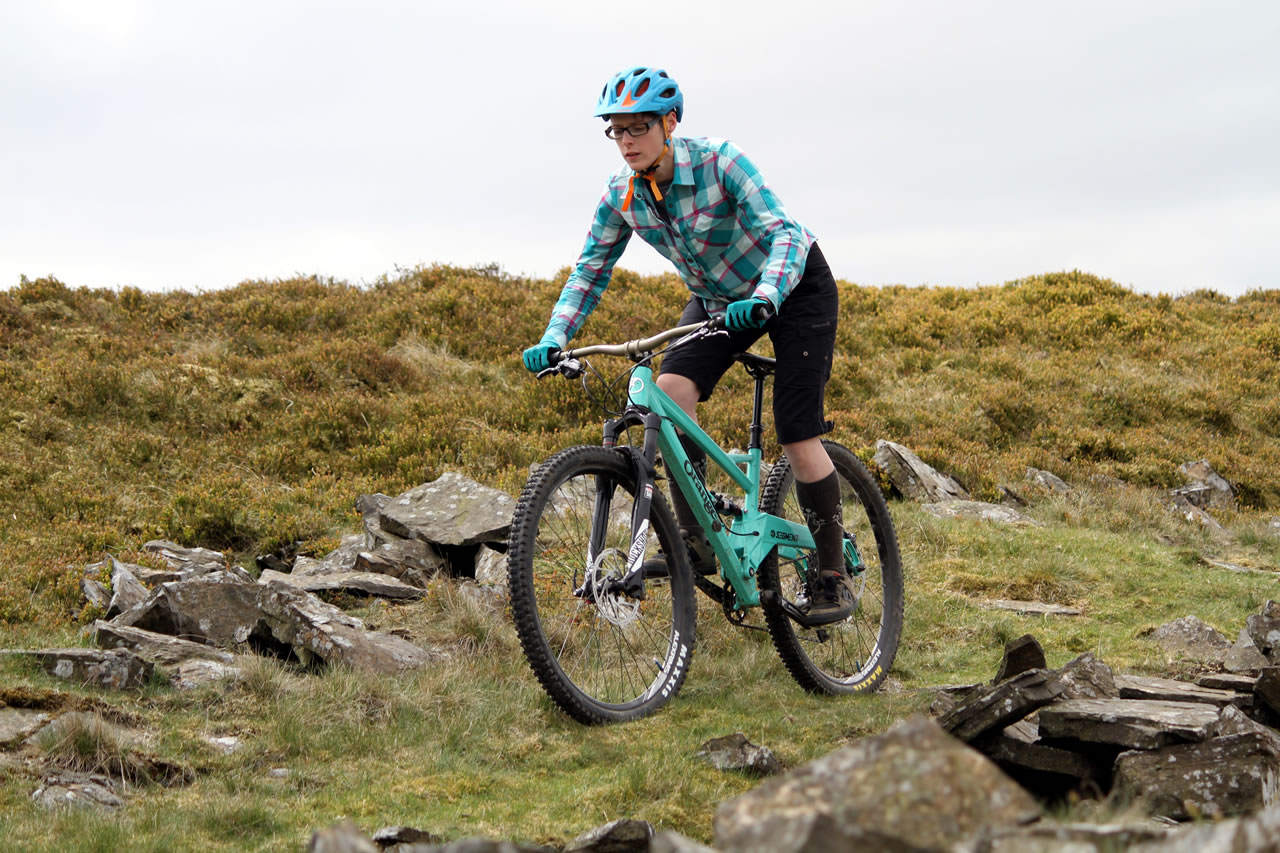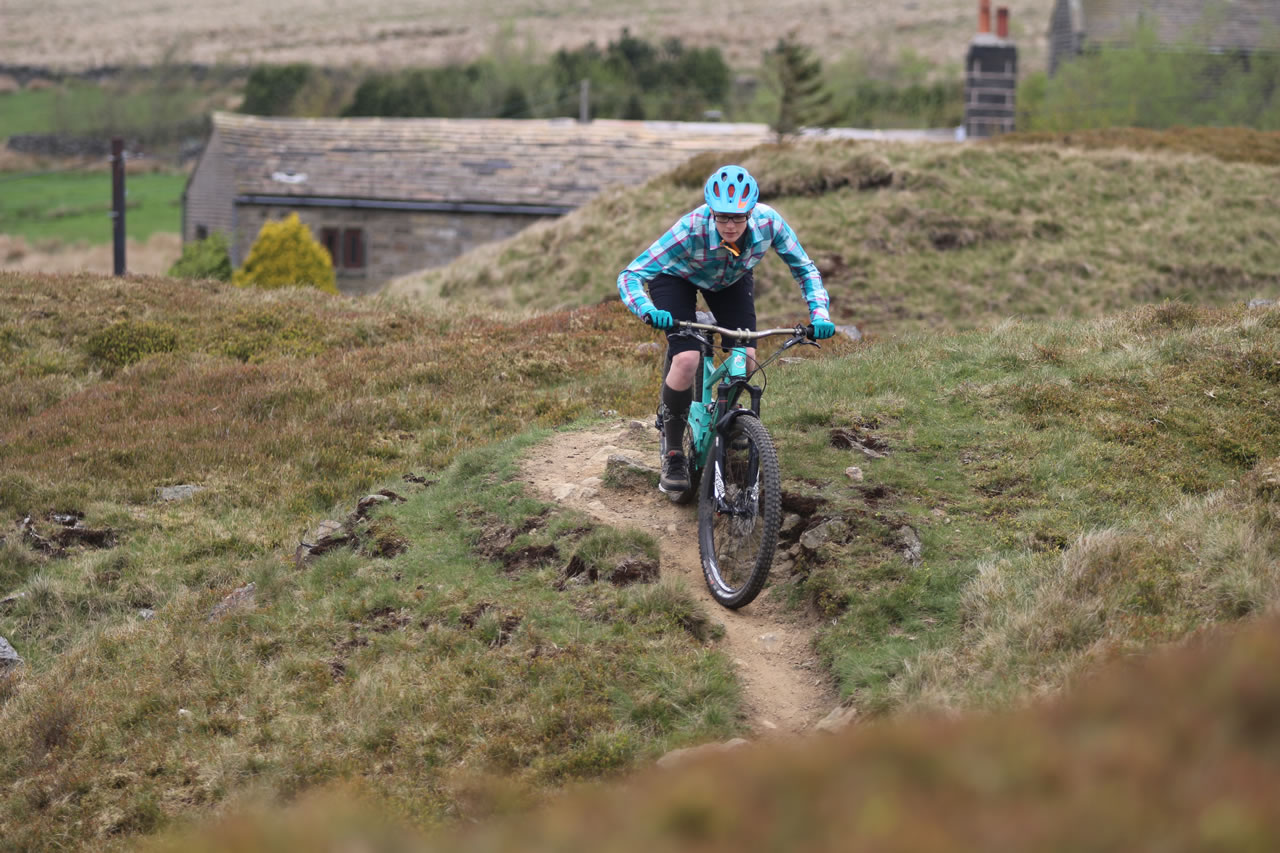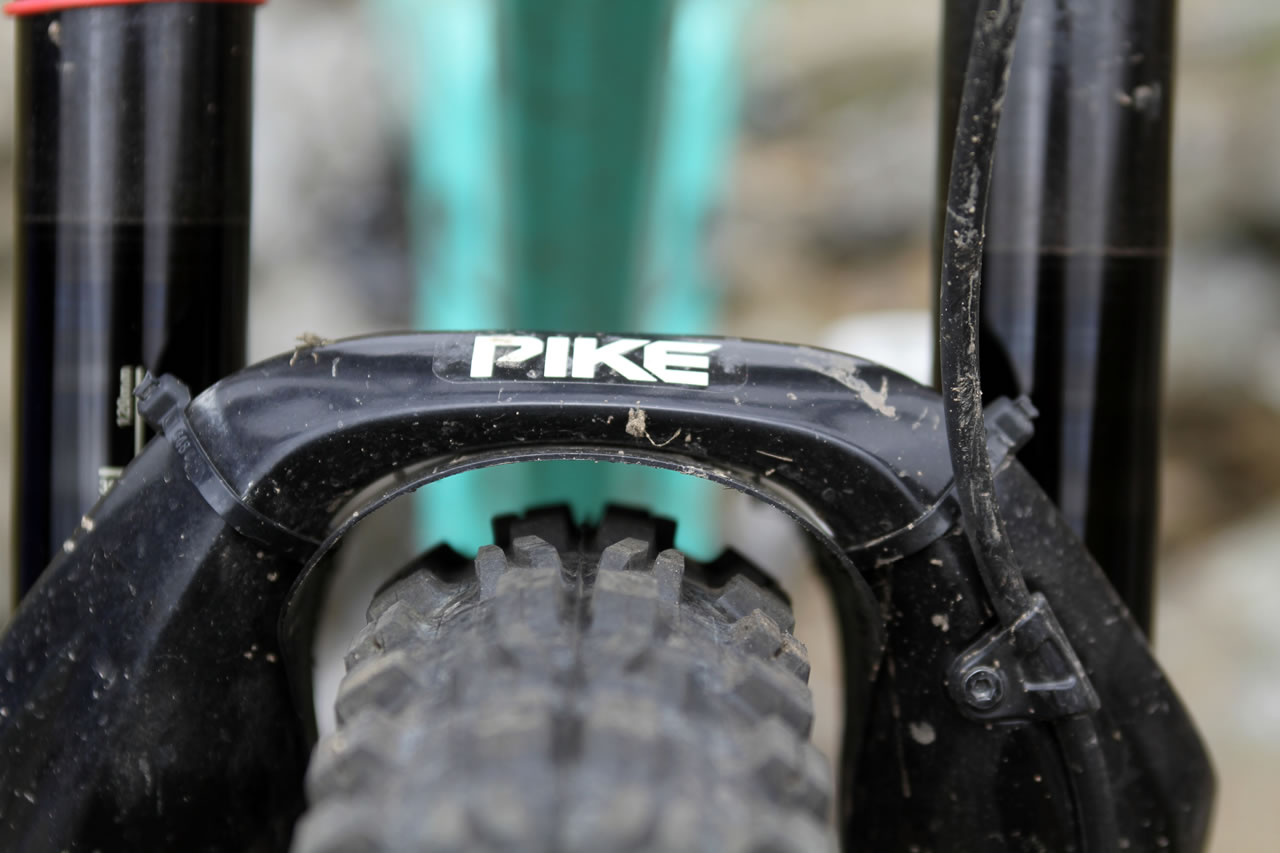Rewind to our Issue #106 bike test of the Orange Segment.
The Segment appeared in 2015 with a video that played on the dual meaning of its name: orange segment/Strava segment (geddit?). While it was ostensibly an evolution of the Gyro – Orange’s original 29er – its geometry, and whole intended purpose was different enough to effectively make it a brand new model.

The idea of the Segment is very much in line with the ‘longer fork, short travel 29er’ theme that many bike companies (Kona, Transition) have adopted. There’s a longer 120mm fork and a little less at the rear: 110mm from the single pivot rear suspension. In the days before the 27.5in wheel, we reckoned that a 29er rode like a 26in bike with 20mm more travel, so consider the Segment to be an equivalent 140/130mm machine and you’ll see that it has some pretty serious trail bike ambitions that belie the initial glance at the travel figures on the website.

The Segment 2 has benefited from many of the modernising touches that the 27.5in Orange Five underwent. There’s a new, un-bent top tube with a bracing strut that will please the aesthetes. It’s a slimmer, keyhole shape which’ll keep it from flexing while leaving the profile thinner between the knees for more wiggle room. A rationalisation of tubes and fixtures has dropped 400g off the weight too.

With the proliferation of single ring set-ups, all hopes of running a front mech have been abandoned. This is one-by or nothing. With that concession, though, Orange has been able to shorten the effective chainstay length by 3mm. It has widened the pivot by 6mm to increase side-to-side stiffness and this is helped further by the adoption of 148mm Boost spacing at the back (something to bear in mind if you were thinking of potential upgradability from your old 29er – you’ll need new wheels). And sorry, shorter folks, there’s no small size due to the jumbo wheels.

While Orange has shown the Segment with 27.5+ wheels, there is only barely enough room for a 2.8in on a skinny rim, so don’t go thinking this is being pitched as a dual-size wheeler. However, there is good room for a chunky rear 29er tyre.

The rest of the RS-level spec is great, workmanlike UK-approved gear: Pike RC3 Solo Air fork, SRAM GX gears, Race Face cranks and SRAM 200/180 Guide brakes on Hope/Alex wheels shod with a Maxxis Minion/High Roller 2 pairing. The UK nod continues with a tiny Renthal 31mm Apex stem and 780mm Renthal Fatbars. There’s a KS Lev Dropper post in there too. All great stuff and it’s ready to ride or race right out of the box. You might want to tubeless-up the wheels (which’ll need taping first) but there’s nothing else out there we’d really change.

The Ride
From the start, the Segment was intended to be a hard-hitting trail bike. Despite a ‘mere’ 110mm of rear travel, the long, low stance, 68/74° angles and super-short stem mark it out as a bike that wants to be ridden from the front, all bent arms and body English.

It can take a while to dial the suspension in, especially at the back, due to the limited movement of the small shock, but once you’ve got the sweet spot, it’s instantly apparent. There’s enough support from the shock on climbs (and judicious use of the Climb/Trail/Descend lever seems essential) without blowing through the travel too quickly on descents.

The Segment is welcoming on climbs, offering decent grip without too much oddball feedback and on rolling, rocky singletrack, is a hoot to ride. Hovering over a slightly lowered saddle and pushing a big gear, the bike belies the thought that 29ers can be slow steering, clumsy things. This bike can rail!

On descents, there’s a very planted feel to the bike that’s entirely confidence inspiring and there were many occasions where releasing the brakes and giving in to gravity revealed a surprisingly calm and collected ‘short’ travel bike. That’s until you start hitting the edge of the operating envelope, when things start getting a little raggedy. Up to that point, though, it’s a hugely fun bike – and by the time you start reaching the bottom of the travel, you’re already going pretty swiftly. Slip back under that speed again and everything is perfectly competent and you’re ready to test the limits once again.

Over the course of the test, there’s not been a single wrong step from the Segment and we can’t really think of anything we’d upgrade out of the box. The Factory spec for a further grand gets you some spanglier components, including a Fox 34, but really there’s no need unless you fancy it.

Overall
The already capable Segment model has now been Boosted and lightened and shortened and lowered for the future. It’s a great package out of the box and (with a tubeless conversion) really is ready to ride as hard and far as you fancy. The RS spec is wisely chosen and it’s all hung on a British-made frame that’s welded in Halifax by tattooed blokes. It’s not carbon and there’s no XTR for the money, but you’ll be able to throw it down any rocky hillside with a huge amount of confidence and a pretty big smile.

- Frame // Orange 6061-T6 Monocoque/Reynolds tubing
- Shock // RockShox Monarch RT3
- Fork // RockShox Pike 120 RCT3 Solo Air
- Hubs // Hope Pro II Evo
- Rims // Alex Volar, tubeless ready
- Tyres // Maxxis Minion DHF/High Roller 2
- Chainset // Race Face Turbine Direct Mount 30T
- Front Mech // MRP 1x guide
- Rear Mech // SRAM GX1 11 speed
- Shifters // SRAM GX1 11 speed
- Brakes // SRAM Guide R 203/180mm
- Stem // Renthal Apex 31mm
- Bars // Renthal Fatbar alloy 780mm
- Grips // Strange Lock-On
- Seatpost // KS Lev Integra 125mm
- Saddle // SDG Falcon, Orange Edition
- Size Tested // Medium
- Sizes available // M, L, XL
- Weight // 29.5lb without pedals





